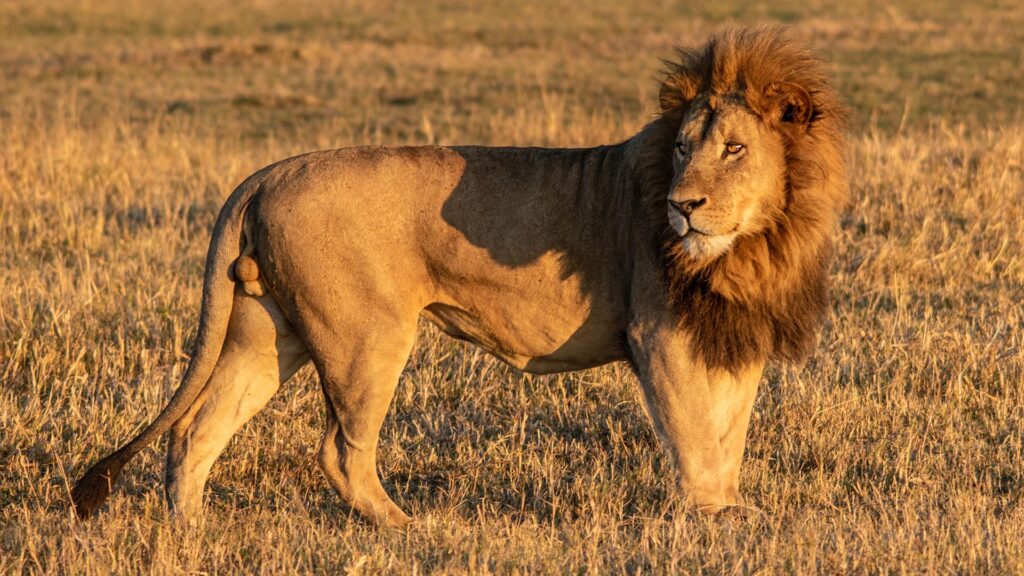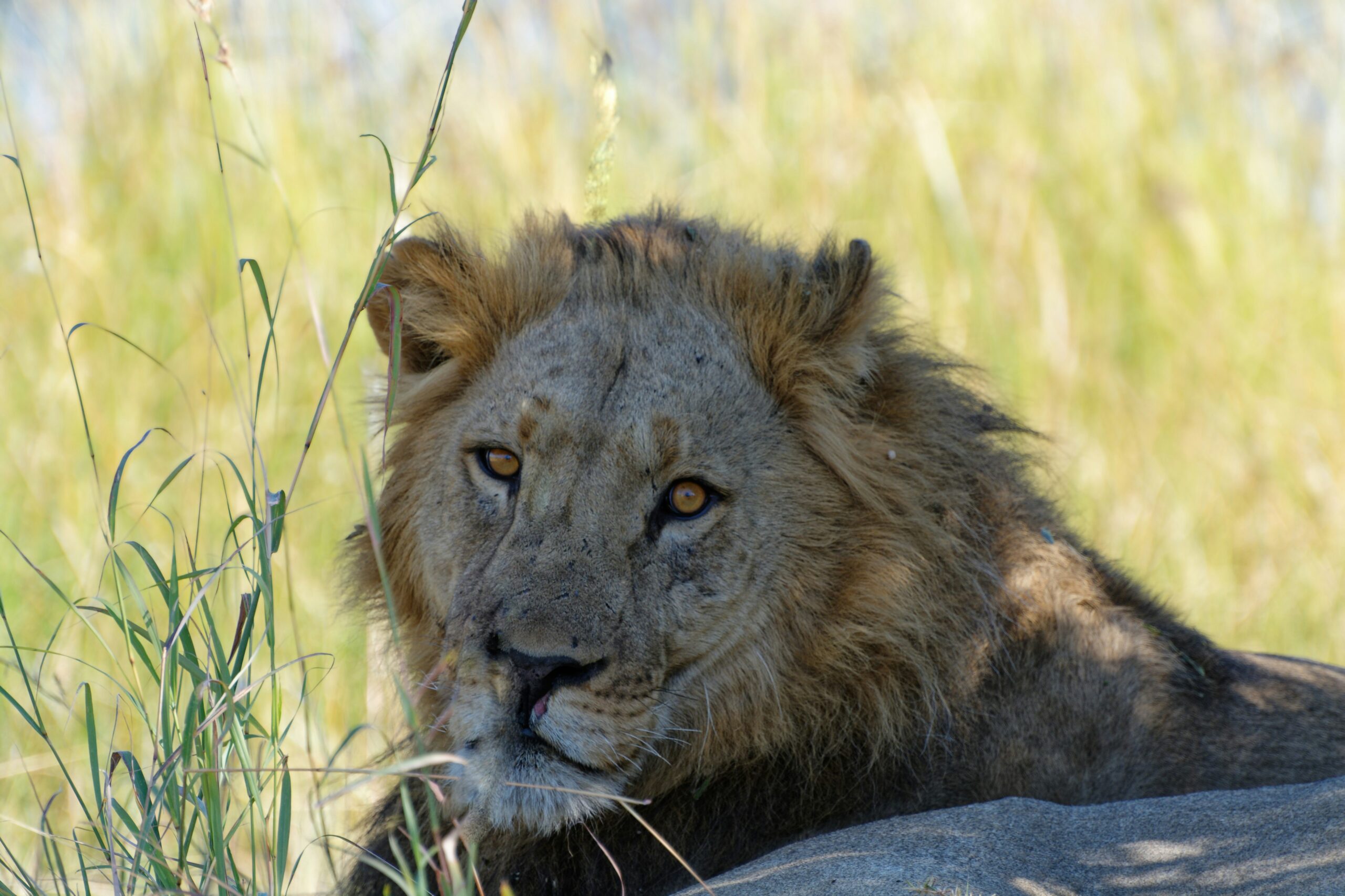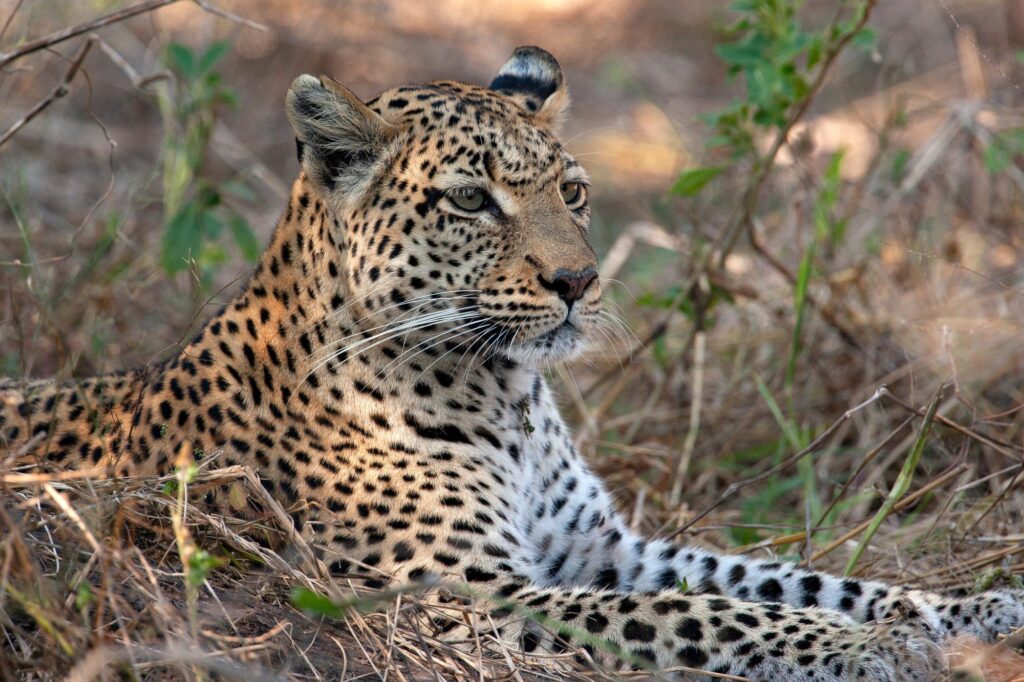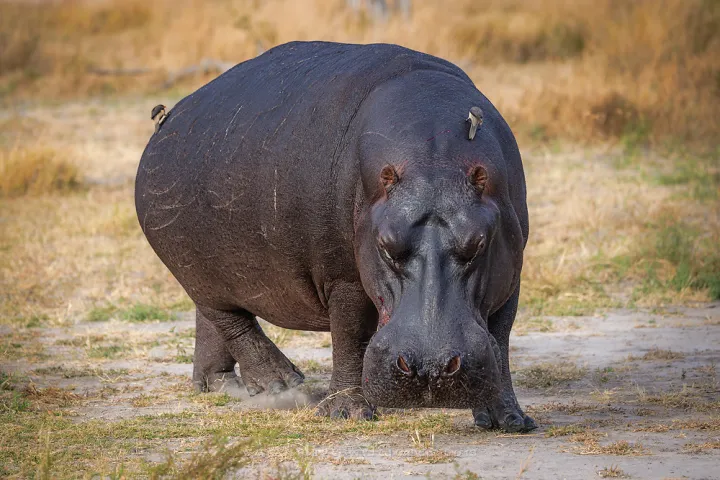Lions, often referred to as the “Kings of the Jungle,” hold a special place in the hearts and minds of people around the world. These magnificent creatures symbolize strength, courage, and power. However, while they are frequently associated with vast jungle expanses, African lions (Panthera leo) predominantly inhabit the savannas and grasslands of Africa.
This article delves into the fascinating life of the African lion, exploring key aspects such as its habitat, diet, hunting strategies, and unique family structures.
What is the African Lion?
The African lion is one of the most iconic and recognizable animals on the planet. As a member of the big cat family, lions are the only species to exhibit social behavior, living in groups known as prides.

Their regal appearance and commanding presence have earned them a reputation as rulers of the animal kingdom. Understanding their habitat, diet, hunting patterns, and social dynamics provides insight into what makes these creatures such formidable predators and complex animals.
Physical Characteristics of the African Lion
African lions are impressive creatures with distinct physical features. Males are known for their large manes, which vary in color from light brown to black. The mane not only serves to intimidate rivals but also protects their neck and throat during fights.
Male lions typically weigh between 330 to 550 pounds (150-250 kg), with some individuals reaching over 600 pounds. Females, slightly smaller, weigh between 265 and 395 pounds (120-180 kg). Lions have a muscular build, sharp retractable claws, and powerful jaws capable of bringing down large prey.
Habitat of the African Lion
Contrary to popular belief, lions are not jungle dwellers. African lions primarily reside in savannas, grasslands, and open woodlands, preferring areas that offer plenty of prey and access to water sources. Their habitats stretch across sub-Saharan Africa, with significant populations in countries like Tanzania, Kenya, South Africa, and Botswana. Some lions also inhabit semi-desert regions, such as Namibia’s Kalahari Desert.
The availability of prey largely dictates where lions can live. These large predators thrive in ecosystems with large herbivorous populations such as zebras, antelope, and buffalo. Grasslands and savannas offer open spaces where lions can effectively use their hunting strategies. However, human encroachment and habitat loss have led to a decline in their natural habitats, limiting their once-vast range.
Diet of the African Lion
Lions are carnivores and apex predators, meaning they sit at the top of the food chain in their environment. Their diet consists primarily of large mammals such as zebras, wildebeests, buffalo, and various species of antelope. They are also known to hunt smaller animals like hares, birds, and reptiles when larger prey is scarce.
Lions require a substantial amount of food to maintain their strength and energy. A male lion may consume up to 15% of its body weight in a single meal, which can be about 70 pounds of meat. However, lions do not need to eat daily. On average, they will feed every three to four days, relying on a successful hunt to sustain them until their next meal.
Lions are opportunistic hunters and scavengers. While they prefer fresh kills, they won’t hesitate to take advantage of carrion left by other predators or natural causes.
Hunting Strategies of the African Lion
One of the key reasons lions are such formidable predators is their social structure, which enables cooperative hunting. Unlike other solitary big cats like leopards or tigers, lions hunt in groups, usually with the lionesses taking the lead. This teamwork increases their success rate when targeting larger, more challenging prey.
A typical lion hunt begins with stalking the prey, using the cover of darkness or tall grass to get within striking distance. Lions are not fast runners over long distances, so they rely on getting close to their prey before launching an ambush. Once within range, the lionesses will sprint toward the target, aiming to tackle the prey or deliver a fatal bite to the throat or nose.
Male lions often contribute to the hunt by using their size and strength to bring down larger animals, such as buffalo, but they primarily defend the pride’s territory from rival males and other predators.
Despite their impressive hunting skills, lions are only successful in about 25-30% of their hunting attempts. Group hunting not only increases their odds but also allows them to take down larger animals than a single lion could manage alone.
Family Structure: The Lion Pride
Lions are unique among big cats in that they live in social groups called prides. A pride typically consists of several related females, their cubs, and a small number of adult males, usually between one and three. The pride structure plays a critical role in the survival and protection of its members.

Lionesses
The females of the pride are the primary hunters and caregivers. They work together to rear their cubs, often nursing one another’s offspring if needed. Female lions typically stay with their birth pride for life, contributing to the stability and continuity of the group.
Male Lions
The males, often brothers or cousins, are responsible for defending the pride’s territory from intruders, particularly other males. Male lions have a shorter tenure within a pride, usually lasting two to four years, after which they are either driven out by younger, stronger males or leave to form coalitions. Once ousted, these males either become nomadic or take over a new pride.
Lion Reproduction and Cub Rearing
Raising cubs is a cooperative effort within the pride. Female lions are usually in sync when it comes to reproduction, meaning multiple lionesses give birth around the same time, which helps ensure the survival of their young.

Cubs are vulnerable in their first few weeks of life, and their mothers rely heavily on the protection of the pride during this period. Cubs learn how to hunt through play and watching the adults, staying with the pride until they are mature enough to fend for themselves.
Cubs rely on their mothers and the pride until they are about two years old, learning vital hunting and survival skills through play and observation.
Communication and Social Behavior
Lions are highly communicative animals, using a range of vocalizations, body language, and scent markings to interact with each other and assert their dominance. The lion’s roar is perhaps its most famous vocalization, often heard over distances of up to five miles. Roaring serves several purposes, including territorial defense and coordination with pride members during hunts.
Other forms of communication include grooming, rubbing heads, and licking each other. These behaviors reinforce social bonds within the pride and help maintain harmony among its members. Additionally, lions use their facial expressions, tail flicks, and body posture to convey different messages, whether it be dominance, affection, or submission.
Threats to the African Lion
Despite being apex predators, African lions face numerous threats in the wild, most of which stem from human activities. Habitat loss due to agriculture, human settlements, and poaching has severely diminished their population. The illegal wildlife trade also poses a significant risk, with lions targeted for their bones, claws, and other body parts.
Human-lion conflicts, particularly in areas where livestock farming is common, often result in retaliatory killings by farmers. As lions encroach on human settlements in search of food, they are sometimes poisoned or shot to protect livestock. This conflict, combined with decreasing prey populations due to overhunting by humans, continues to threaten their survival.
Conservation Efforts for African Lions
Numerous conservation organizations and wildlife reserves and national parks are working tirelessly to protect African lions and their habitats. Lion populations are stable in some areas, but in others, particularly in West Africa, they are critically endangered. Conservation efforts focus on habitat restoration, anti-poaching measures, and community-based initiatives to mitigate human-lion conflicts.
Protected areas like the Moremi Game Reserve in Botswana and the Kruger National Park in South Africa have become sanctuaries for lions, providing them with a haven to hunt and live without significant human interference.
Community-based programs are also vital, as they teach local farmers how to coexist with lions without resorting to lethal methods when conflicts arise.
Ensuring the Future of the African Lion
The African lion, a symbol of strength and majesty, is not only an apex predator but also a vital part of its ecosystem. Understanding the lion’s complex family structures, hunting strategies, and evolutionary background helps us appreciate its role in the natural world.
Yet, as human expansion threatens their habitats, conservation efforts become more critical to ensure these magnificent creatures continue to roam the African savannas for generations to come.
Frequently Asked Questions
Where did the African lion come from?
The African lion originated in Africa. Their ancestors migrated from this continent and spread across parts of Europe and Asia before returning to Africa as their primary habitat.
Why did the African lion go extinct in parts of its range?
Lions once roamed much of Europe and Asia but went extinct in these regions due to habitat destruction, human conflict, and overhunting. In Africa, their range has also dramatically shrunk due to human encroachment and poaching.
What does the African lion represent?
The African lion symbolizes strength, power, courage, and leadership. Throughout history, lions have been admired for their regality and prowess, often representing kingship and authority in human culture.
What is special about the African lion?
The African lion is special because of its social structure, which is unique among big cats. They live in prides and exhibit cooperative hunting behavior, which increases their efficiency as predators. Additionally, male lions’ manes set them apart from other wild cats and are a symbol of their strength and status.
What is the ancestor of the African lion?
The African lion’s ancestor is a species known as Panthera leo fossilis, which lived over 500,000 years ago. This lion evolved from an earlier ancestor shared with other big cats and eventually adapted to the African landscape.





